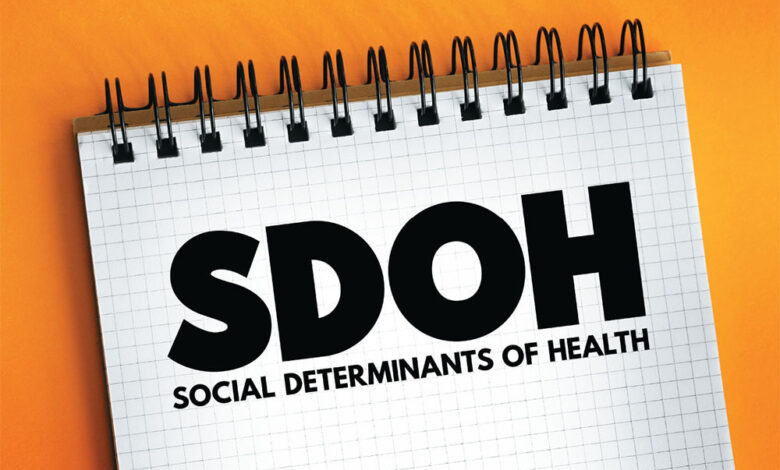
2024 SDOH Social Determinants of Health (SDOH) Requirements and What Lies Ahead in 2025
IPPS 2025 FINAL RULE: EXPANDING SDOH DIAGNOSIS CODES
In 2024, CMS laid the groundwork for addressing SDoH through its Inpatient Prospective Payment System (IPPS) with the inclusion of homelessness (sheltered and unsheltered) as a complication or comorbidity (CC) for inpatient reimbursement under the Medicare Severity Diagnosis Related Groups (MS-DRG) payment system. Despite limited inclusion of data, CMS felt they had enough information to guarantee a higher reimbursement structure for this Z code conversion from a non-CC to CC, marking the first set of social determinants codes that were tied to financial reimbursement. Notably, the 2025 IPPS Final Rule marked a major development with the expansion of SDoH diagnosis codes related to all areas of housing instability, elevating these from a non-CC to CC status. This change demonstrates the agency’s recognition that patients facing housing insecurity often require more healthcare resources, and hospitals serving such patients should be reimbursed accordingly.
These newly categorized codes include conditions such as inadequate housing (e.g., plumbing, heating or electricity issues) and housing instability (e.g., risk of homelessness or recent homelessness). As these factors are increasingly associated with healthcare complexity, CMS aims to ensure they are accurately reflected in hospital reimbursement models. Providers are now encouraged to ask detailed questions about patients’ housing status to improve data collection and quality (CMS 2025 IPPS Final Rule).
Aside from the expansion of Z code capture and reimbursement options, CMS has included quality metrics for increased data collection through their social drivers of health program in the inpatient setting. First released as voluntary in 2023, mandatory in 2024 and pay for performance in 2026, hospitals are required to ask five domain questions related to personal safety, housing, utilities, transportation and food insecurity for each adult, 18 years and older, inpatient admission. Annual submission will evaluate total offerings and total positive responses. The additional requirements for asking these questions and responding to positive responses to address concerns has increased acute care case management and social work involvement in the hospital setting. To date, hospitals are still trying to make meaning out of patient positive responses by incorporating patient needs more holistically into care planning decisions for transitional plans and outpatient transitions, moving beyond an initial process of handing out resource guides to developing closed-loop referral systems for patients to obtain meaningful connections to address their unmet needs.
OUTPATIENT PROSPECTIVE PAYMENT SYSTEM (OPPS): SDOH IN OUTPATIENT CARE
In addition to the inpatient setting, CMS has proposed expanding its SDoH initiatives to outpatient settings in its 2025 Outpatient Prospective Payment System (OPPS) Proposed Rule. While SDoH screening has been mandatory for inpatients, CMS is now looking to incorporate it into outpatient settings such as hospital outpatient departments (HOPDs), rural emergency hospitals (REHs) and ambulatory surgical centers (ASCs).
This proposed expansion will occur in stages, starting with voluntary reporting in 2025, followed by mandatory reporting in 2026. The goal is to screen patients for five key health-related social needs (HRSNs): food insecurity, housing instability, transportation challenges, utility difficulties and interpersonal safety, like the inpatient setting requirements.
However, this initiative raises questions about how outpatient facilities will operationalize these screenings and ensure appropriate follow-up for positive cases. Given the broad scope of outpatient encounters, from lab visits to same-day surgeries, these settings will need to establish mechanisms for triaging patients with positive SDoH screenings to determine what positive responses will require immediate follow up versus those that may be able to be referred out for a later phone call or support at another time to avoid delays in care in the outpatient setting. There will likely be a large need for case management and social work departments in the decision and implementation of this initiative if confirmed in the final ruling.
LOOKING AHEAD TO 2025
IPPS 2025 AND BEYOND: REDEFINING READMISSIONS AND EXPANDING SDOH INTEGRATION
One of the key focus areas for CMS in 2025 will be refining its metrics for hospital readmissions, a cornerstone of its value-based care initiatives. The Hospital Readmissions Reduction Program (HRRP) will continue, but CMS is taking a more nuanced approach to understanding patient care by examining factors beyond traditional readmission metrics. This includes reviewing the impact of social determinants such as medication management, health literacy and social support systems, which can contribute to hospital readmissions within 30 days of discharge. Although no specific measures have been called out for additional requirements, CMS ensured in their 2025 IPPS ruling to discuss their intention to correlate data across reporting submissions for readmissions, quality outcomes and social drivers of health.
This evolving focus underscores the complexity of transitions of care, particularly for patients facing social challenges. CMS is encouraging hospitals to refine their care coordination processes to mitigate the effects of these social drivers on patient outcomes, which means that case managers and case management departments will need to continue their expansion of a more holistic approach for care transitions.
FOOD INSECURITY AND BROADER SDOH CATEGORIES
In its final ruling for 2025, CMS acknowledged the importance of food insecurity (Z59.41) as a potential factor for increased healthcare utilization. While there wasn’t enough data to elevate food insecurity to a complication or comorbidity (CC) status in 2025, it remains on CMS’s radar for future updates. This signals CMS’s growing awareness of how various social factors, from extreme poverty to lack of access to necessities, can exacerbate healthcare needs and costs.
Beyond food insecurity, CMS is likely to continue examining other SDoH categories—such as utility challenges, transportation barriers and interpersonal safety concerns—and how they influence resource use in both inpatient and outpatient settings. With the expanded focus on outpatient screenings, the agency hopes to build a more comprehensive picture of how social drivers affect health outcomes across the continuum of care.
OPERATIONAL CHALLENGES AND FUTURE ADJUSTMENTS
While CMS’s increasing focus on SDoH is a welcome development for addressing health inequities, operational challenges remain. Hospitals and outpatient facilities must navigate the logistics of incorporating SDoH screening into their workflows. For example, outpatient settings may need to integrate these questions into their patient portals or registration processes, ensuring they are asked during every applicable encounter. Facilities will also need to establish clear protocols for addressing positive screenings, especially for urgent social needs such as housing instability or interpersonal safety.
As CMS continues to roll out these initiatives, it will likely refine its approach based on stakeholder feedback. In 2024, several commenters raised concerns about the documentation and reporting of SDoH data, citing the need for standardized definitions and better training for healthcare providers. CMS has responded by committing to re-examine the severity designations for SDoH Z codes in future rulemaking, ensuring they accurately reflect the resources required to address these social factors.
CONCLUSION
The changes CMS has implemented in 2024, alongside the proposed updates for 2025, represent significant progress in addressing the social drivers of health within the healthcare system. By expanding SDoH screenings to outpatient settings and refining how social factors are integrated into payment models, CMS is pushing the industry toward a more holistic understanding of health. However, as these initiatives continue to evolve, hospitals and healthcare providers will need to adapt their operational processes to ensure that social risks are appropriately identified, documented and addressed. This requires case management to be at the table as they road map assessment and intervention strategies to ensure needs are met in the appropriate setting with the leveraging of community partners. The road ahead will involve continuous dialogue, data collection and policy refinement, but the goal remains clear: improving health outcomes by addressing the root causes of health inequity.
REFERENCES
CMS (July 2024) CY 2025 OPPS Proposed Rule Retrieved on September 22, 2024 from https://www.cms.gov/newsroom/fact-sheets/cy-2025-medicare-hospital-outpatient-prospective-payment-system-and-ambulatory-surgical-center.
CMS (September 2024) FY 2024 IPPS Final Rule Retrieved on September 22, 2024 from https://www.cms.gov/medicare/payment/prospective-payment-systems/acute-inpatient-pps/fy-2024-ipps-final-rule-home-page.
CMS (September 2024) FY 2025 IPPS Final Rule Retrieved on September 22, 2024 from https://www.cms.gov/medicare/payment/prospective-payment-systems/acute-inpatient-pps/fy-2025-ipps-final-rule-home-page.
Image credit: DIZAIN/SHUTTERSTOCK.COM





